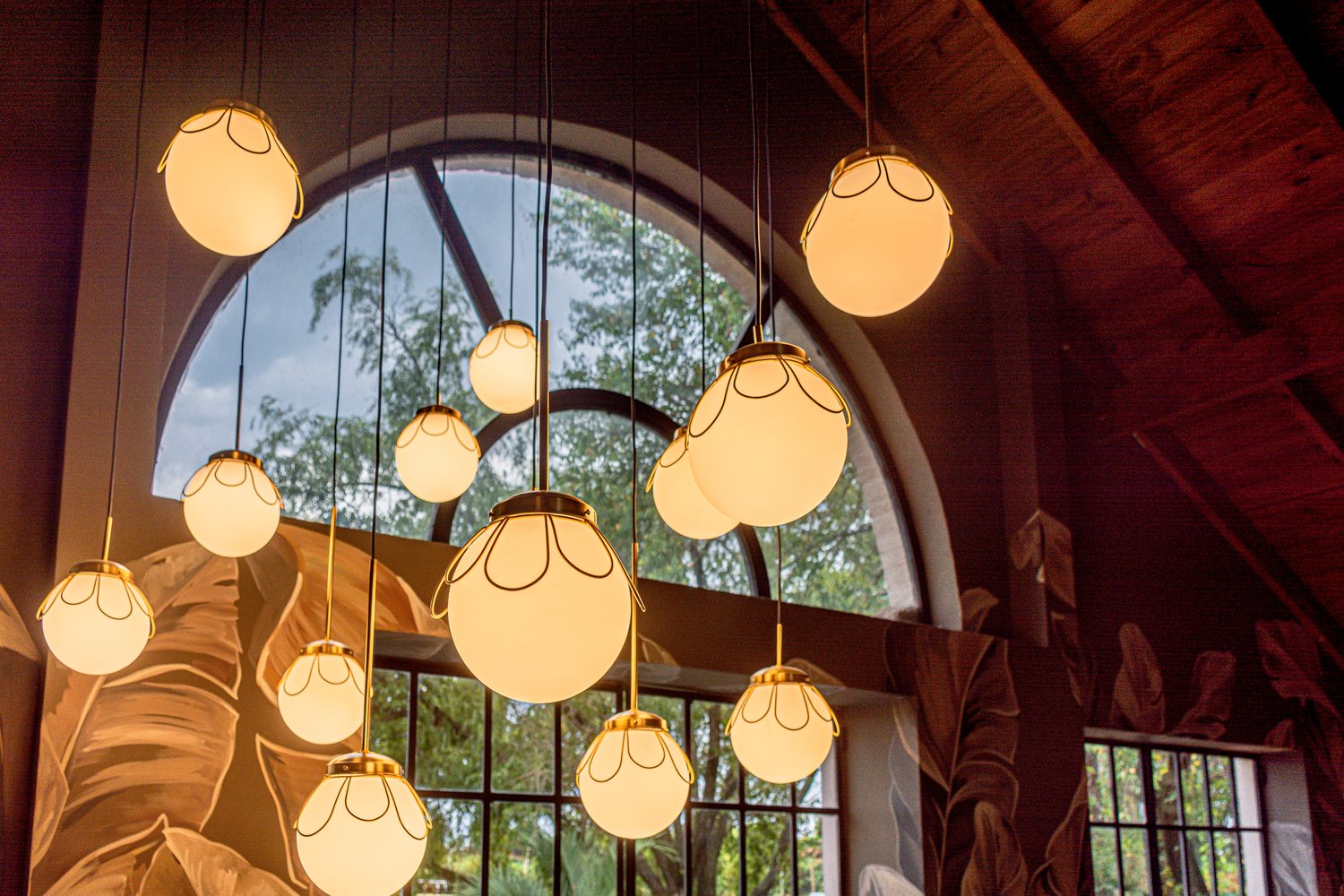Understanding the importance of proper lighting
Lighting plays a crucial role in our daily lives. It affects our mood, productivity, and overall well-being. Proper illumination can transform a space, making it more functional and aesthetically pleasing. In the United States, the average household uses about 1,000 kilowatt-hours of electricity per year for lighting alone. This significant consumption underscores the importance of choosing efficient lighting solutions. [PHRASE] https://onninen.pl/en/products/Lighting options have evolved dramatically in recent years, offering a wide range of choices for both residential and commercial spaces.
The right lighting can enhance the ambiance of a room, highlight architectural features, and improve visibility for tasks. It can also contribute to energy savings and reduce environmental impact. Modern lighting technologies, such as LED, can use up to 75% less energy than traditional incandescent bulbs. This efficiency translates to substantial cost savings over time. Additionally, proper lighting design can increase property value and create a more inviting atmosphere for occupants and visitors alike.
When selecting lighting for a space, consider factors such as the room’s purpose, natural light availability, and desired mood. Task lighting is essential for areas where detailed work is performed, while ambient lighting creates a general illumination throughout the space. Accent lighting can be used to draw attention to specific features or artwork. By combining these different types of lighting, you can create a layered and versatile lighting scheme that adapts to various needs and activities.
Color temperature is another important aspect of lighting design. Measured in Kelvin (K), it ranges from warm (2700K-3000K) to cool (5000K-6500K) tones. Warmer lights are often preferred for living spaces and bedrooms, creating a cozy atmosphere. Cooler lights are typically used in workspaces and kitchens, promoting alertness and visibility. Some modern [PHRASE] https://onninen.pl/en/products/Lighting/Light-fixtures offer adjustable color temperatures, allowing users to customize the lighting to suit different times of day or activities.
Proper maintenance of lighting systems is crucial for longevity and efficiency. Regular cleaning of fixtures can improve light output by up to 20%. Replacing old or flickering bulbs promptly ensures consistent illumination and prevents energy waste. It’s also important to dispose of used bulbs properly, as many contain materials that can be harmful to the environment if not recycled correctly. By taking care of your lighting systems, you can maximize their performance and lifespan.
Selecting the right indoor lighting solutions
Indoor lighting is essential for creating comfortable and functional living spaces. The average American home has about 40 light bulbs, highlighting the importance of choosing efficient and effective lighting solutions. When selecting indoor lighting, consider the specific needs of each room. Kitchens and home offices typically require brighter, task-oriented lighting, while bedrooms and living rooms benefit from softer, more ambient illumination.
[PHRASE] https://onninen.pl/en/products/Lighting/Light-fixtures/Indoor-LED-luminaires have become increasingly popular due to their energy efficiency and longevity. These fixtures can last up to 25 times longer than traditional incandescent bulbs, reducing replacement frequency and costs. LED luminaires also offer excellent color rendering, ensuring that objects and surfaces appear true to their natural colors. This feature is particularly important in spaces where accurate color perception is crucial, such as art studios or retail environments.
Dimming capabilities are a valuable feature in indoor lighting. Dimmable fixtures allow users to adjust light levels according to time of day, activity, or personal preference. This flexibility can contribute to energy savings and create the desired ambiance for different occasions. Many modern LED fixtures offer seamless dimming without flickering, providing a smooth transition between light levels. When selecting dimmable fixtures, ensure compatibility between the dimmer switch and the light source to avoid issues with performance or longevity.
Consider the use of smart lighting systems for enhanced control and convenience. These systems allow users to adjust lighting remotely via smartphone apps or voice commands. Some smart lighting solutions can learn user preferences and automatically adjust throughout the day. While the initial investment may be higher, smart lighting can lead to significant energy savings and improved user experience over time. Studies have shown that smart lighting systems can reduce energy consumption by up to 40% in residential settings.
When designing indoor lighting schemes, don’t overlook the importance of natural light. Maximizing daylight can reduce the need for artificial lighting during daytime hours, leading to energy savings and improved well-being. Use light-colored window treatments to allow more natural light while maintaining privacy. Strategically placed mirrors can help reflect and distribute natural light throughout a space. By combining natural and artificial lighting effectively, you can create a more balanced and energy-efficient indoor environment.
Optimizing outdoor lighting for safety and aesthetics
Outdoor lighting serves multiple purposes, including enhancing safety, security, and curb appeal. Proper exterior illumination can reduce the risk of accidents and deter potential intruders. According to the U.S. Department of Energy, outdoor lighting accounts for about 7% of all residential electricity use. Choosing efficient outdoor lighting solutions can significantly impact energy consumption and costs.
[PHRASE] https://onninen.pl/en/products/Lighting/Light-fixtures/Outdoor-luminaires come in various styles and configurations to suit different architectural designs and landscapes. When selecting outdoor fixtures, consider factors such as durability, weather resistance, and light distribution. LED outdoor luminaires are particularly well-suited for exterior applications due to their energy efficiency and long lifespan. These fixtures can withstand harsh weather conditions and maintain consistent performance over time.
Motion sensor lights are an excellent choice for outdoor security lighting. These fixtures activate only when movement is detected, conserving energy when the area is unoccupied. Motion sensors can reduce outdoor lighting energy use by up to 90% compared to fixtures that remain on continuously. Place motion sensor lights strategically near entrances, walkways, and potential hiding spots to maximize their effectiveness in deterring intruders and improving safety.
Landscape lighting can dramatically enhance the appearance of outdoor spaces after dark. Use a combination of uplighting, downlighting, and path lighting to create depth and visual interest. Solar-powered landscape lights are an eco-friendly option that can reduce energy costs. These fixtures harness sunlight during the day to power illumination at night, making them ideal for areas without easy access to electrical outlets. Solar lights typically last between 2-3 years before requiring battery replacement.
Consider light pollution when designing outdoor lighting schemes. Excessive or poorly directed outdoor lighting can disrupt wildlife, interfere with stargazing, and cause glare for neighbors and passersby. Use fixtures with full cutoff or fully shielded designs to direct light downward and minimize light trespass. The International Dark-Sky Association recommends using warm-colored lights (3000K or lower) for outdoor applications to reduce blue light emissions, which can be particularly disruptive to nocturnal ecosystems.
Maintaining and upgrading your lighting systems
Regular maintenance is crucial for ensuring the longevity and efficiency of your lighting systems. Clean fixtures and bulbs at least twice a year to remove dust and debris that can reduce light output. For outdoor fixtures, check for water damage or corrosion, especially in coastal or humid environments. Promptly replace any damaged components to prevent further issues and maintain optimal performance.
Keep track of the age and performance of your lighting fixtures. Most LED bulbs have a lifespan of 25,000 to 50,000 hours, but their light output can decrease over time. Plan for replacements before fixtures reach the end of their useful life to avoid sudden failures. When upgrading, consider newer technologies that offer improved efficiency and features. For example, some modern LED fixtures now offer color-tuning capabilities, allowing users to adjust the color temperature to suit different times of day or activities.
Explore energy-saving opportunities by conducting a lighting audit of your space. Identify areas where lighting may be excessive or inefficient. Consider installing occupancy sensors in low-traffic areas to automatically turn lights off when not needed. These sensors can reduce lighting energy use by 30% to 80% in applicable spaces. Additionally, evaluate the potential for daylight harvesting systems, which adjust artificial lighting levels based on available natural light, further reducing energy consumption.
Stay informed about lighting regulations and standards in your area. Many jurisdictions have adopted energy codes that set minimum efficiency requirements for lighting systems. Compliance with these standards not only ensures legal operation but can also lead to significant energy savings. For example, the International Energy Conservation Code (IECC) provides guidelines for lighting power density and controls in both residential and commercial buildings.
Consider professional assistance when planning major lighting upgrades or redesigns. Lighting designers and electrical contractors can provide valuable insights into the latest technologies and best practices for your specific needs. They can help create comprehensive lighting plans that balance aesthetics, functionality, and energy efficiency. Professional installation ensures that all components are properly integrated and operating at peak performance, maximizing the benefits of your lighting investment.





